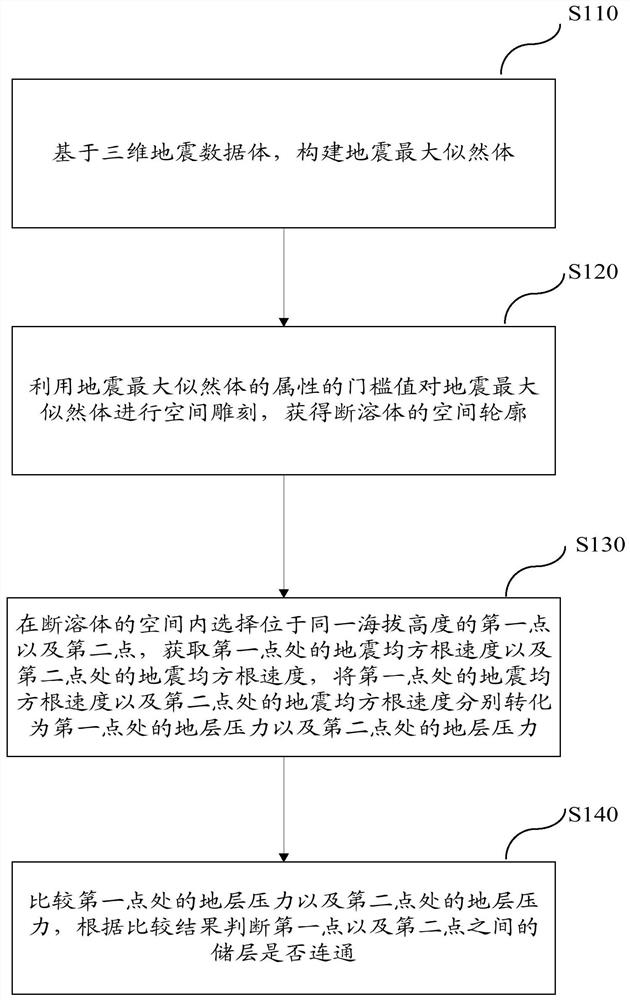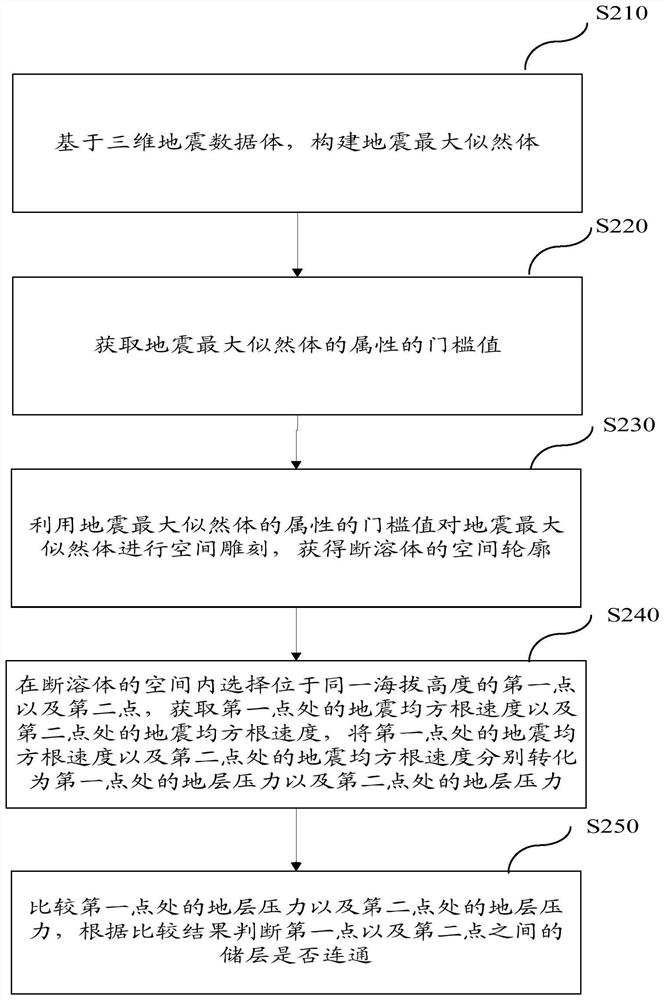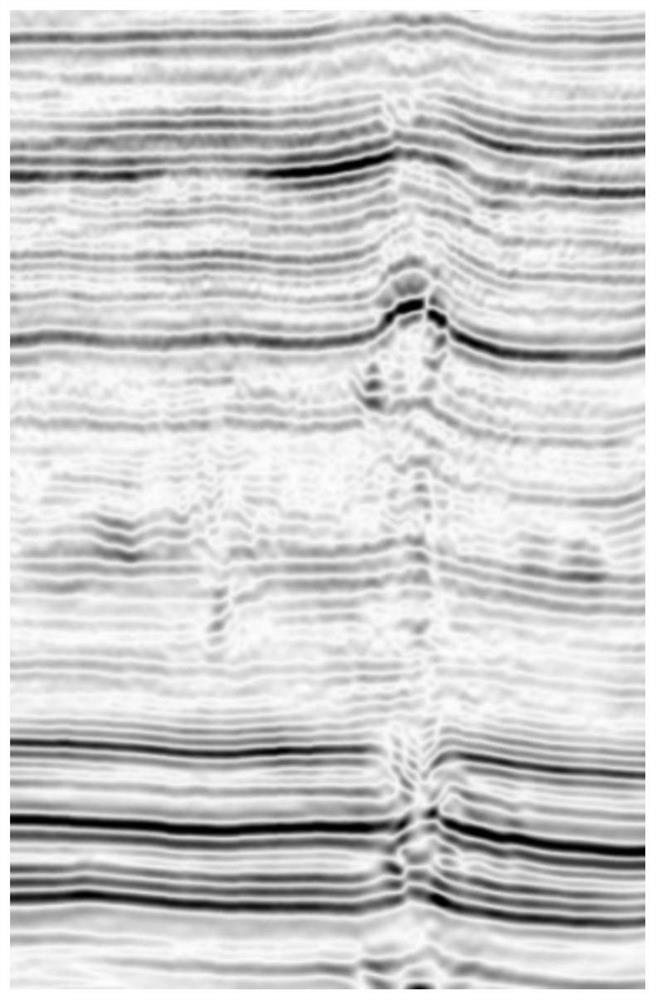Seismic identification method and device for fault-karst reservoir connectivity
A technology of earthquake identification and connectivity, applied in seismology, measurement devices, seismic signal processing, etc., can solve the problem of inability to evaluate the connectivity of reservoirs
- Summary
- Abstract
- Description
- Claims
- Application Information
AI Technical Summary
Problems solved by technology
Method used
Image
Examples
Embodiment 1
[0068] figure 1 A flow chart of a seismic identification method for fault-karst reservoir connectivity according to Embodiment 1 is shown. Such as figure 1 As shown, the method includes the following steps:
[0069] Step S110: Construct a seismic maximum likelihood volume based on the 3D seismic data volume.
[0070] Wherein, the three-dimensional seismic data volume specifically includes: a data set collected during seismic exploration and used for interpreting seismic profiles.
[0071] According to the 3D seismic data volume collected in the process of seismic exploration, the maximum likelihood estimation algorithm is used to construct the seismic maximum likelihood volume. Among them, the maximum likelihood estimation algorithm is a statistical algorithm based on the maximum likelihood principle. The maximum likelihood estimation algorithm provides a way to estimate the parameters of the model given the observed data, that is: "the model is determined, but the paramet...
Embodiment 2
[0096] figure 2 A flow chart of a seismic identification method for fault-karst reservoir connectivity according to Embodiment 2 is shown. Such as figure 2 As shown, the method includes the following steps:
[0097] Step S210: Construct a seismic maximum likelihood volume based on the 3D seismic data volume.
[0098] Wherein, the three-dimensional seismic data volume specifically includes: a data set collected during seismic exploration and used for interpreting seismic profiles.
[0099] According to the 3D seismic data volume collected in the process of seismic exploration, the maximum likelihood estimation algorithm is used to construct the seismic maximum likelihood volume. Among them, the maximum likelihood estimation algorithm is a statistical algorithm based on the maximum likelihood principle. The maximum likelihood estimation algorithm provides a way to estimate the parameters of the model given the observed data, that is: "the model is determined, but the param...
Embodiment 3
[0161] Figure 5 A device structure diagram of a seismic identification device for fault-karst reservoir connectivity according to Embodiment 3 is shown. Such as Figure 5 As shown, the device includes:
[0162] Seismic maximum likelihood body construction module 51, based on the three-dimensional seismic data volume, constructs the seismic maximum likelihood body;
[0163] The spatial contour carving module 52 of the fault-karst body uses the threshold value of the attribute of the earthquake maximum likelihood body to carry out spatial carving on the earthquake maximum likelihood body to obtain the spatial contour of the fault-karst body;
[0164] The formation pressure calculation module 53 selects the first point and the second point at the same altitude in the space of the fault-karst body, obtains the seismic root mean square velocity at the first point and the seismic root mean square velocity at the second point, and converts The seismic root mean square velocity at...
PUM
 Login to View More
Login to View More Abstract
Description
Claims
Application Information
 Login to View More
Login to View More - R&D
- Intellectual Property
- Life Sciences
- Materials
- Tech Scout
- Unparalleled Data Quality
- Higher Quality Content
- 60% Fewer Hallucinations
Browse by: Latest US Patents, China's latest patents, Technical Efficacy Thesaurus, Application Domain, Technology Topic, Popular Technical Reports.
© 2025 PatSnap. All rights reserved.Legal|Privacy policy|Modern Slavery Act Transparency Statement|Sitemap|About US| Contact US: help@patsnap.com



